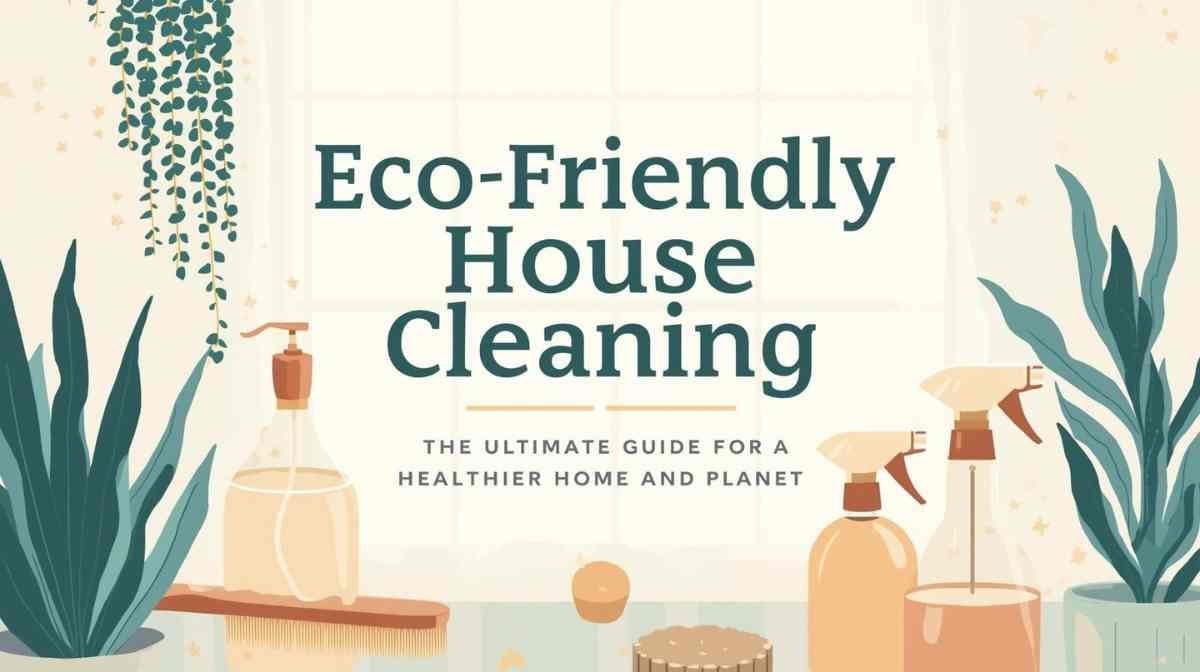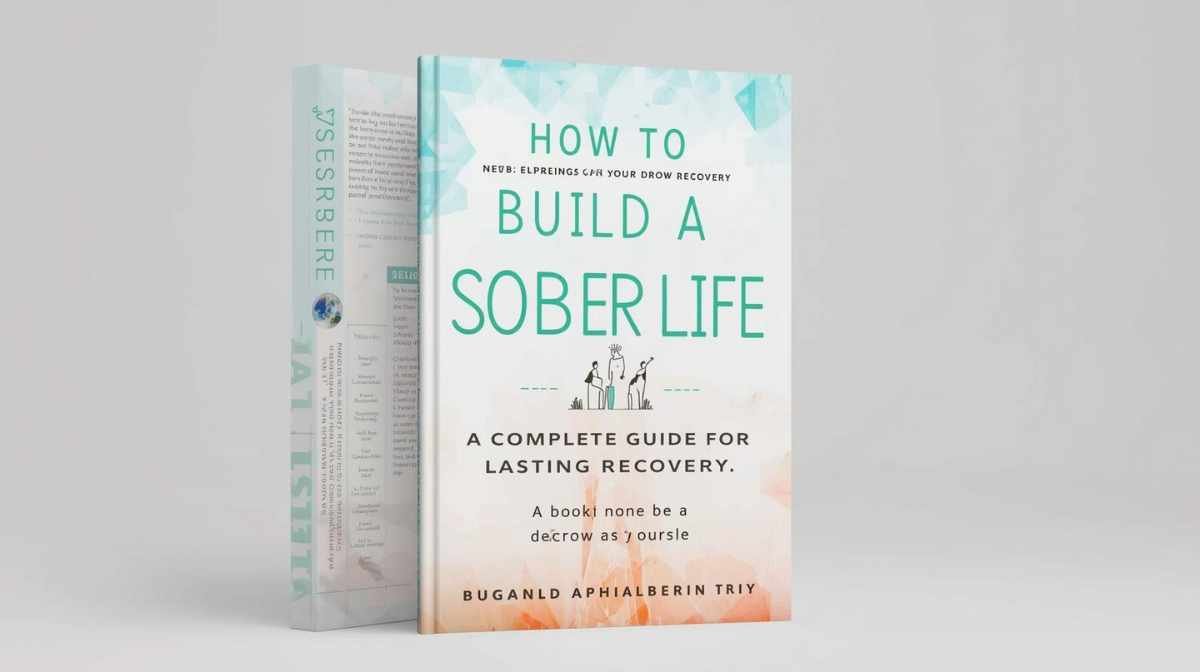Keeping your home clean has never been more important, but traditional cleaning products can be toxic, harmful to health, and damaging to the environment. Eco-friendly house cleaning offers a sustainable, safe, and effective way to maintain a spotless home while protecting your family and the planet. In this ultimate guide, we’ll cover everything—from the science behind eco-friendly cleaners to step-by-step routines, DIY recipes, room-specific tips, case studies, cost comparisons, and more.
Why Eco-Friendly House Cleaning Matters
1. Environmental Benefits
Traditional cleaning products often contain phosphates, ammonia, chlorine, and synthetic fragrances. These chemicals:
- Pollute waterways: Over 80% of chemicals from households eventually enter rivers, lakes, and oceans.
- Harm wildlife: Aquatic life can be affected by toxic residues.
- Increase carbon footprint: Manufacturing chemical cleaners emits greenhouse gases.
Switching to eco-friendly alternatives reduces pollution, waste, and greenhouse gas emissions.
2. Health Benefits
Conventional cleaners can trigger:
- Respiratory issues (cough, asthma flare-ups)
- Skin irritation and rashes
- Headaches and nausea from strong chemical fumes
Eco-friendly house cleaning minimizes exposure to these toxins, improving indoor air quality and overall well-being.
3. Economic Benefits
- DIY natural cleaners cost as little as $10–$20 per month.
- Reusable tools (microfiber cloths, bamboo brushes) last years.
- Health savings: Fewer doctor visits and reduced allergy treatments.
Traditional vs Eco-Friendly Cleaning
| Feature | Traditional Cleaning | Eco-Friendly Cleaning |
|---|---|---|
| Ingredients | Harsh chemicals | Natural (vinegar, baking soda, lemon, essential oils) |
| Safety | Risky for children & pets | Safe for all family members |
| Environmental Impact | High (water pollution, plastic waste) | Low (biodegradable & recyclable) |
| Cost | Moderate to high | Low to moderate, long-term savings |
| Effectiveness | Fast but potentially toxic | Effective with correct methods |
Tip: Some surfaces like marble and granite require special care even with eco-friendly cleaners. Avoid acidic solutions like vinegar directly on these surfaces.
Essential Eco-Friendly Cleaning Supplies
Natural Ingredients
- Vinegar: Kills bacteria and removes mineral deposits
- Baking Soda: Scrubbing and deodorizing powerhouse
- Lemon: Natural antibacterial and stain remover
- Castile Soap: Plant-based soap for general cleaning
- Hydrogen Peroxide: Safe disinfectant alternative
- Essential Oils: Tea tree, lavender, eucalyptus – for antibacterial effects and pleasant fragrance
Tools
- Microfiber cloths and reusable sponges
- Bamboo scrub brushes
- Glass spray bottles for DIY cleaners
- HEPA-filter vacuum cleaners (reduce allergens)
Certified Eco-Friendly Brands
Look for Green Seal, EcoLogo, or EPA Safer Choice certifications to ensure products are truly environmentally safe. Brands like Seventh Generation, Method, Mrs. Meyer’s, and Ecover are popular and effective.
Room-by-Room Eco-Friendly Cleaning
Kitchen
- Countertops & Cabinets: Spray a 50/50 vinegar-water solution; wipe with microfiber cloth
- Oven & Stove: Apply baking soda paste, leave 15–20 minutes, scrub gently
- Sink & Drain: Baking soda + vinegar to remove odors
- Refrigerator: Wipe shelves with castile soap; place half a lemon inside for odor absorption
- Dishwashing: Use biodegradable soap and hot water; consider soap nuts for sustainable cleaning
Hack: Keep a small spray bottle with vinegar-water solution handy to quickly clean spills and stains.
Bathroom
- Mold & Mildew: Spray hydrogen peroxide or vinegar on tiles; leave 10–15 minutes, then scrub
- Toilets: Baking soda + hydrogen peroxide works as an effective, chemical-free scrub
- Showers & Mirrors: Lemon juice removes soap scum
- Bath Mats & Towels: Wash weekly with eco-friendly detergent
Tip: Avoid mixing vinegar and hydrogen peroxide directly; they can form peracetic acid, which is corrosive.
Living Room
- Dusting: Use microfiber cloths to trap dust without chemicals
- Floors: Clean hardwood or laminate with a mixture of water, castile soap, and a few drops of essential oil
- Upholstery: Sprinkle baking soda, leave 15 minutes, vacuum to remove odors
Bedroom
- Mattresses & Bedding: Sprinkle baking soda, vacuum after 30 minutes; wash sheets with eco-friendly detergent
- Closets: Use natural sachets with dried herbs or essential oils
- Curtains & Drapes: Steam-clean or wash with biodegradable detergent
Outdoor Spaces
- Balcony & Patio: Scrub with mild soap and water
- Windows: Vinegar-water solution for streak-free shine
- Furniture: Castile soap or natural oil treatments for wood
DIY Eco-Friendly Cleaning Recipes
All-Purpose Cleaner
- 1 cup water
- 1 cup vinegar
- 10 drops essential oil
- Spray on surfaces and wipe
Glass Cleaner
- 1 cup water
- 1 cup vinegar
- 1 teaspoon cornstarch
- Spray and wipe with microfiber cloth
Bathroom Disinfectant
- ½ cup hydrogen peroxide
- 1 cup water
- Spray on tiles, mirrors, and sinks
Grease Cleaner
- 2 tablespoons baking soda
- Lemon juice
- Apply, scrub, rinse
Natural Air Freshener
- 1 cup water
- 10–15 drops essential oil
- Spray in rooms for a fresh scent
Tip: Store DIY cleaners in labeled glass bottles for safety and sustainability.
Eco-Friendly Cleaning Routine
Daily: Wipe counters, sweep floors, wash dishes
Weekly: Mop floors, dust furniture, clean bathroom surfaces
Monthly: Deep-clean windows, appliances, curtains, and mattress
Pro Tip: Stick to a routine and use checklists to ensure thorough eco-friendly cleaning.
Cost Comparison Table
| Cleaning Type | Monthly Cost | Pros | Cons |
|---|---|---|---|
| Traditional Cleaning | $30–$50 | Fast, strong chemicals | Health risks, environmental impact |
| DIY Eco-Friendly Cleaning | $10–$20 | Safe, sustainable, cost-effective | Time-consuming |
| Eco-Friendly Market Brands | $20–$40 | Certified, convenient | Slightly higher cost |
Eco-Friendly Cleaning for Pet Owners
- Odor removal: Baking soda on carpets and bedding
- Accident cleanup: Vinegar + water solution safe for pets
- Avoid toxic essential oils like tea tree and citrus
- Routine: Vacuum pet hair regularly and wash bedding with eco-friendly detergent
Case Study: Ahmed Family’s Eco-Friendly Transformation
Before:
- Strong chemical odors
- Children with allergies
- High cleaning costs
Action:
- Switched to DIY vinegar, baking soda, and essential oil cleaners
- Used microfiber cloths and bamboo brushes
- Created structured daily, weekly, and monthly eco-friendly cleaning routine
After 30 Days:
- Improved indoor air quality
- Reduced allergy symptoms
- 40% reduction in cleaning costs
- Positive environmental impact
Key Takeaway: Structured eco-friendly cleaning is effective, economical, and sustainable.
Conclusion
Adopting eco-friendly house cleaning is a responsible, sustainable choice that benefits your home, health, and the environment. By using natural ingredients, safe tools, structured routines, and cost-effective methods, you can maintain a sparkling clean home while reducing your carbon footprint. Start today, and transform your home into a safe, eco-friendly haven.








